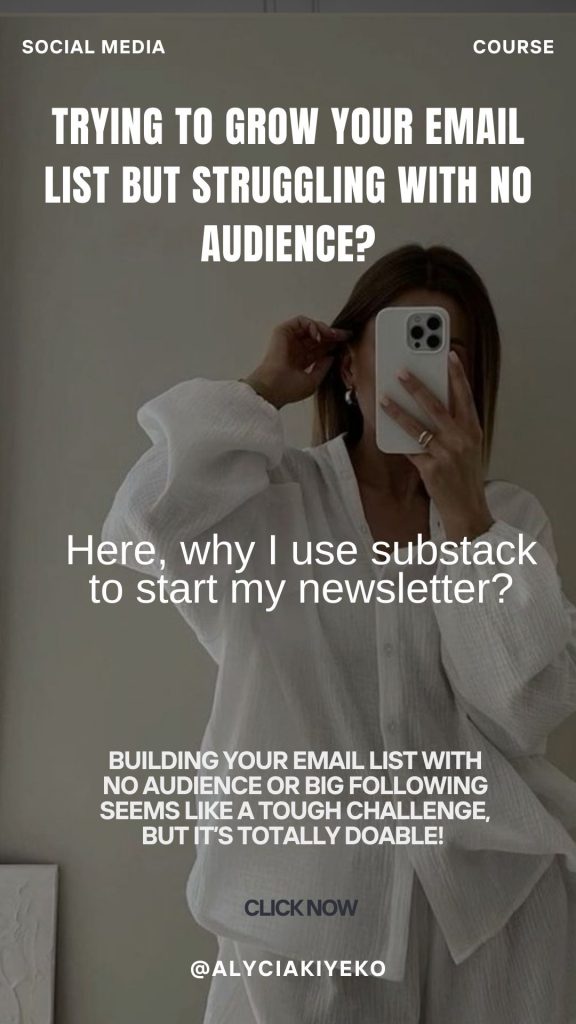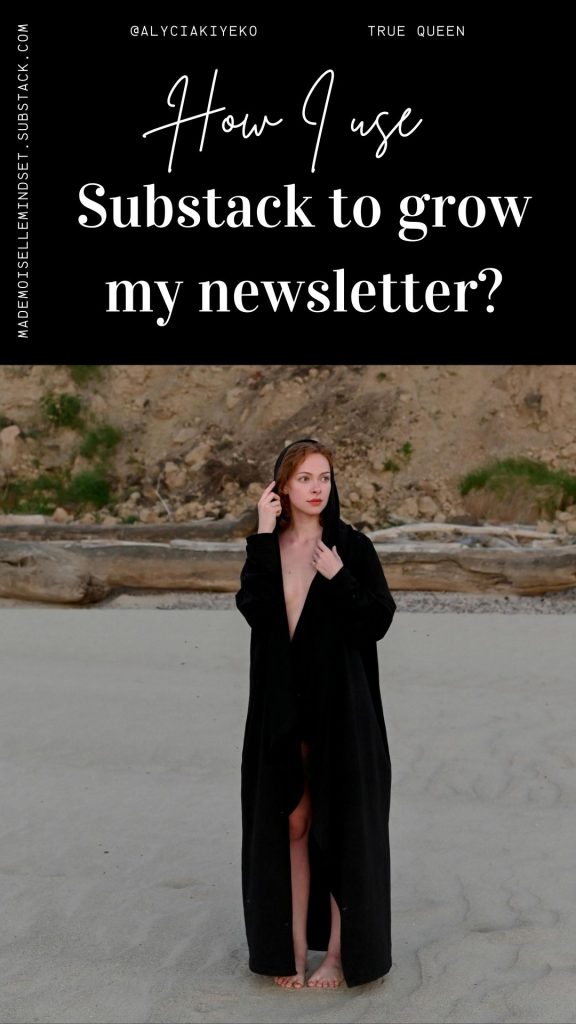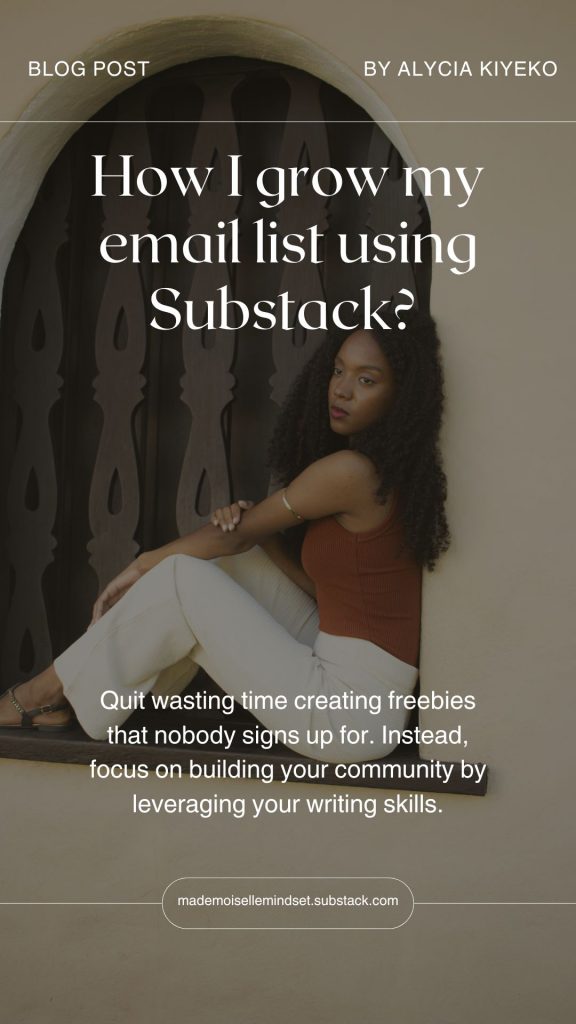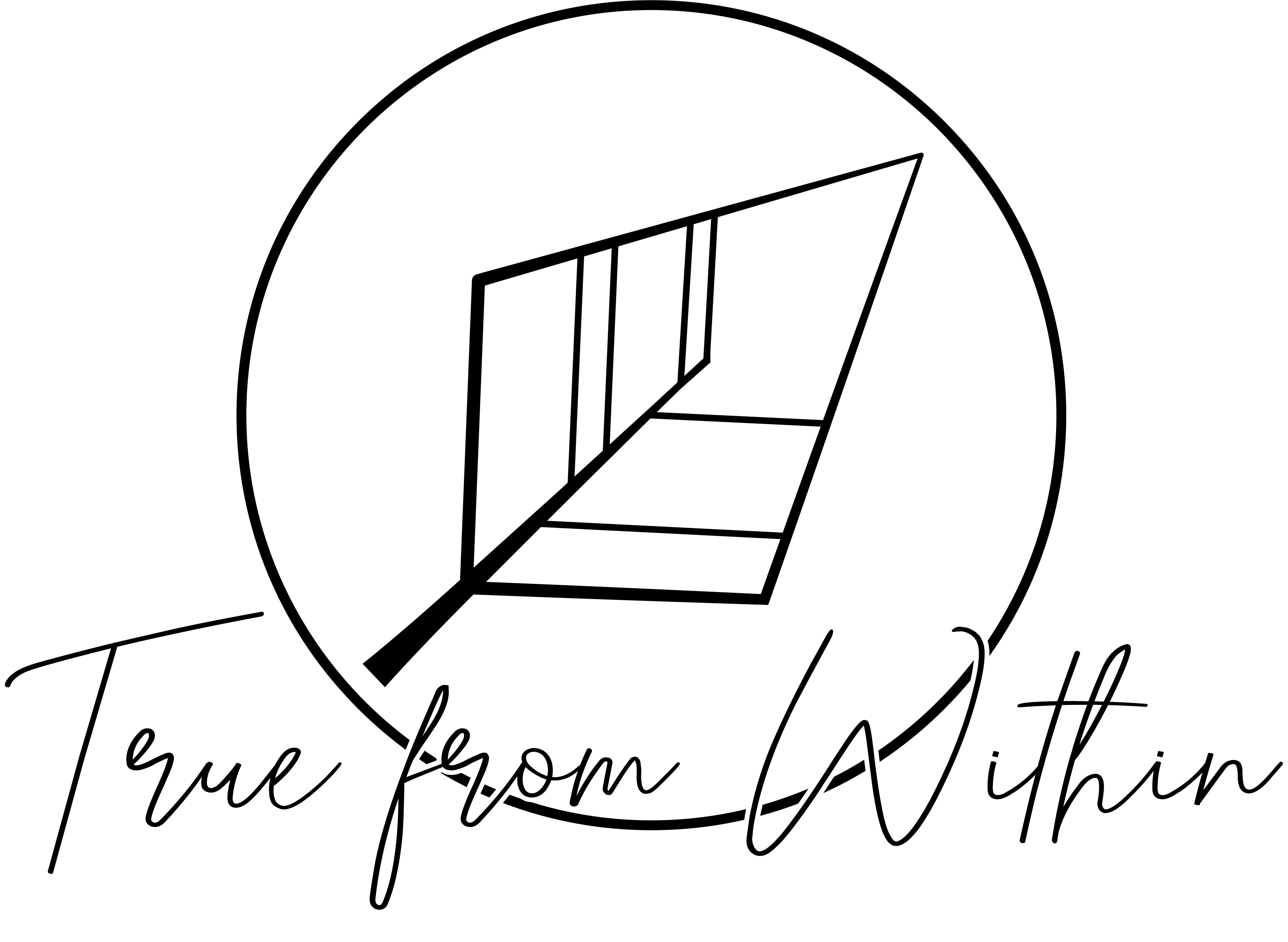Every day, people receive tons of emails, so how do you stand out in the cluttered inbox? Email marketing is one of the most powerful tools you can use to grow your business, and I’m not talking about just sending emails for the sake of it. I’m talking about building an email list that’s full of people who want to hear from you, who trust you, and who are ready to buy your offers when the time is right.
You’ve probably heard the gurus say it: “Grow your email list ASAP. You don’t own your followers, but you own your email list.” So, why is it that so many entrepreneurs struggle to build an email list that actually converts into paying clients?
Here’s the truth: the challenge isn’t just about growing your email list—it’s about creating something so valuable that people want to hand over their email address in exchange for your free content. It’s about nurturing a relationship, building trust, and ultimately, selling your offers without feeling salesy or pushy. But with the overwhelming flood of content, including the rise of AI tools like ChatGPT and Claude AI. That’s true, why do so many entrepreneurs struggle with how to grow a newsletter that truly makes an impact?
Let me take you behind the scenes of my own email list journey and show you how I went from struggling to grow my list to using Substack to create a thriving, engaged community of readers who are eager to hear from me. . Along the way, you’ll discover how to grow a newsletter and how to grow on Substack with intention, authenticity, and sustainable strategies.
The Struggle: Trying to Grow A Newsletter the “Guru Way”
For almost a year and a half, I followed all the advice I was given. I created a freebie because that’s what everyone told me to do. I threw together an e-book, shared it on my social media, and even plugged it in my TikTok and Instagram stories. Still, nobody was downloading it.
I tweaked my landing page, re-shared it in my podcast episodes, and even turned it into a Pinterest pin. Crickets.
It was frustrating. I felt like I was doing everything right, but I still wasn’t growing my newsletter. It wasn’t until I made a major mindset shift that things started to change.
Here’s what I learned:
- I wasn’t excited about my freebie. If I didn’t care, why should my audience?
- I didn’t understand my dream client. My offer didn’t speak to their specific pain points or desires.
- I lacked a long-term vision. I was focused on quick wins, not nurturing relationships.
I had two options: keep pushing with the same strategy or completely rethink how I was approaching my list-building
Why the Freebie Didn’t Work (and Why It Took Me So Long to Figure It Out)?
thought I had the right freebie. After all, that’s what everyone said was the key to success, right? A free offer, something to entice people in exchange for their email.
The problem was, I didn’t fully understand my dream client—what they wanted, what they needed, or how to speak directly to their pain points. I was offering an e-book or a template, but it was too vague and didn’t directly solve a specific problem. People weren’t interested because I wasn’t addressing a need they cared about. I was focusing on a quick fix, rather than building a relationship with them.
Here’s what I learned:
- I needed to be excited about my freebie. If I wasn’t excited, how could I expect my audience to be?
- I had to understand the needs of my dream client—not just what I thought they needed, but what they were actually looking for.
- I needed a long-term vision that wasn’t about getting fast results but about nurturing relationships with my audience for the long haul.
I realized that the quick fix mentality was getting in my way. I was in scarcity mode, looking for a shortcut to growth. I wasn’t building a relationship; I was just pushing out content. That’s when the game truly changed.

How to Grow a Newsletter?
How Substack Became My Secret Weapon
I knew I wanted a platform where I could build a meaningful, long-term relationship with my audience, and that’s when I stumbled upon Substack.
I’d already been writing on Medium, but I didn’t have access to the emails of my readers unless they followed a specific link. Substack was the solution I had been looking for. Not only could I build my email list, but I could offer long-form content, allow my readers to comment and ask questions, and most importantly, connect with them on a deeper level.
I deleted my freebie, went all in on my Substack newsletter, and within five months, I went from zero subscribers to almost 50. These weren’t just random people signing up—they were engaged, interested individuals who wanted to hear from me. And because I stopped focusing on freebies and started focusing on offering real value, my community began to grow.
Substack became my new freebie, but this time, I wasn’t just collecting emails; I was nurturing relationships with my readers. This shift made all the difference.
Email Marketing Automation: Why You Need to Use It
While Substack is fantastic for creating long-form content, it doesn’t allow you to set up advanced email marketing systems or categorize your leads. That’s why I paired it with MailerLite, an email marketing platform that lets me automate my emails, segment my audience, and track who opens my emails.
With MailerLite, I can segment my audience into categories: those who open my emails regularly, those who clicked through on links, and those who haven’t engaged in a while. This allows me to tailor my outreach and offer more personalized, targeted content or offers, helping me to serve my community
better while making sure that I’m always on their radar.
Why You Should Start Growing Your newsletter (Without the Overwhelm)
I get it. It feels easier to focus on social media because it’s so immediate. You can post something and get instant feedback. But building an email list through a platform like Substack isn’t about instant results, it’s about nurturing a relationship that will pay off over time.
The magic happens when you stop chasing the quick wins and commit to growing your list with intention and long-term value. People on your email list want to hear from you because they signed up. They trust you. And that trust is something that social media can never replicate.



Why to grow a newsletter on substack?
1. Substack: A Platform Built for Real Connection
I knew I needed a platform that would allow me to connect with my audience in a way that felt personal, authentic, and valuable. Social media platforms like Instagram are great for quick interactions, but they often feel shallow, and you don’t have control over who sees your content. With Substack, I can directly connect with my readers through email and give them content that speaks to their needs.
When someone subscribes to my newsletter, they’re not just passively scrolling through a feed, they’ve opted in to hear from me. When you’re thinking about how to grow a newsletter, focus on platforms like Substack that prioritize meaningful, long-term connections.
2. Substack is Simple and User-Friendly
Let’s be honest: sometimes the tools that promise to help us grow our business end up being more of a headache than a help. From complicated interfaces to a steep learning curve, many email marketing platforms can leave you feeling frustrated and overwhelmed.
With Substack, there’s no fluff. It’s incredibly easy to use. You simply sign up, create a newsletter, and start writing. The design is clean, simple, and intuitive—so you can focus on delivering value instead of wrestling with tech. If you’re someone who just wants to write and connect with your audience (without having to spend hours tweaking templates or learning advanced tools), Substack is a breath of fresh air. If you’ve been stuck trying to figure out how to grow on Substack or any other platform, this simplicity is a game-changer.
3. You Own Your Audience (Goodbye, Algorithm!)
One of the most frustrating things about social media is that you don’t really own your audience. Sure, you might have thousands of followers, but there’s no guarantee that your posts will even reach them—thanks to algorithms that constantly change and hide your content from your followers.
With Substack, you own your email list. Your subscribers chose to hear from you, and they want to stay connected. Plus, you don’t have to worry about the fickle nature of social media algorithms; your email goes directly to their inbox, every time.
This gives you more control over your relationship with your audience, and it means that when you want to sell a product, promote a course, or share an offer, your readers are more likely to see it and take action. When considering how to grow a newsletter, remember this: your email list is yours. Social platforms may change, but your email list stays with you.
4. Monetization Opportunities from Day One
Another huge reason I chose Substack is because of its built-in monetization options. Substack allows you to offer both free and paid subscriptions to your newsletter. This makes it easier to grow your email list with free content first and then offer premium content to paying subscribers once you’ve built trust.
I’ve been able to offer my subscribers exclusive content, resources, and courses directly through Substack without needing to set up additional systems or platforms. It’s an all-in-one solution that simplifies the process of turning your email list into a sustainable income stream. If you’re wondering how to grow on Substack and turn it into a revenue stream, this is it.
5. Community and Engagement
One of the most underrated aspects of Substack is the sense of community it fosters. Unlike social media, where engagement can often feel like a fleeting interaction, Substack allows for deeper, more meaningful conversations. Subscribers can reply directly to your newsletters, and you can respond personally, creating a two-way conversation that’s far more engaging than comments on an Instagram post or tweet.
As I’ve grown my Substack list, I’ve noticed that my audience feels more connected to my work and more invested in my journey. They’re not just passive readers—they’re active participants in the process. This is key when you’re trying to grow a loyal, engaged audience that’s excited to support you and your business. If you’re struggling with how to grow a newsletter, engagement like this can set you apart.
6. Building Authority and Trust
One of the most powerful things about Substack is the ability to build authority. Writing regular, high-quality newsletters positions you as an expert in your niche. By consistently providing value, you can become a trusted voice in your industry, which naturally leads to more loyal subscribers, opportunities, and ultimately, more clients.
The best part? You don’t have to wait to « go viral » or play the social media game. On Substack, your content is evergreen, your best newsletters will continue to serve your audience over time, growing your reputation, and your list, with minimal effort.
7. Substack Is a Low-Cost Investment
Unlike some other email marketing platforms that charge based on the size of your list, Substack doesn’t take any commission until you start charging for subscriptions. This means that you can grow your email list and build a community without incurring additional costs.
Once you’re ready to monetize, you can easily set up a paid subscription option, and Substack takes care of the rest, handling payments, delivery, and security. This keeps things simple and cost-effective, allowing you to focus on what matters most: creating great content and building relationships with your subscribers.
How to Build a Newsletter That Converts?
Here’s what worked for me when I shifted my focus from freebies to building relationships:
1. Understand Your Dream Client
Your newsletter should speak directly to your audience’s needs. What are their pain points? What solutions are they searching for? Craft your content around these answers to keep your readers engaged.
2. Focus on Consistency
Building a newsletter takes time. Commit to showing up regularly—whether it’s weekly or bi-weekly—and provide value in every email.
3. Automate with Tools Like MailerLite
While Substack is excellent for long-form content, pairing it with an email marketing tool like MailerLite allows you to segment your audience and track engagement. This helps you personalize your outreach and improve your results.
4. Offer Value Without Strings
Stop chasing downloads and start delivering value. Substack became my freebie—a place where I could share insights, tips, and stories without expecting anything in return.
Why Growing a Newsletter Matters
Social media may give you quick wins, but email is where the magic happens. When someone joins your email list, they’re raising their hand and saying, “I want to hear from you.” That’s a level of connection that social platforms can’t match.
Learning how to grow a newsletter isn’t just about numbers; it’s about building a community of engaged, loyal readers who trust you and are ready to invest in what you offer.
Final Thoughts: Ditch the Freebie, Build Relationships, and Grow Your List
Growing your email list doesn’t need to be a guessing game or a constant hustle. By focusing on building relationships with your audience and offering content they actually care about, you’ll naturally grow a loyal community.
Substack gave me the freedom to focus on creating valuable, long-form content that my audience actually wanted. And when you focus on creating genuine value, everything else falls into place. Start by shifting your mindset, from collecting emails to creating relationships. When you build your list the right way, you’ll have a community that’s ready to buy, support, and follow you wherever you go. Whether you’re a coach, creative, or entrepreneur, learning how to grow a newsletter is one of the most impactful steps you can take to build your business. Start today, your future audience is waiting.
Ready to take your email list growth to the next level? Download my free guide on building your first $10k offer and learn how to nurture your email list with content that converts











Cette publication a un commentaire
Ping : How to build an email list without a website? - Alycia kiyeko